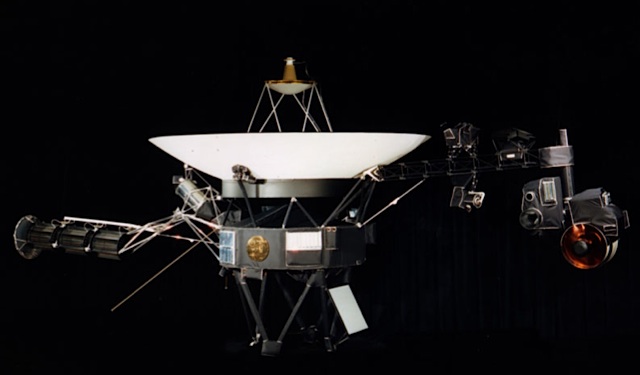
Probably not yet. But it's on the cusp. And part of what makes this entire process really, really interesting is that, by the very nature of this whole experiment, we don't know exactly what will happen when Voyager I does cross that imaginary boundary line. But, as Rebecca Rosen explains on The Atlantic, we do have some pretty good theories.
Some cosmic ray particles enter the heliosphere and we can see them here from Earth. But a slower type has a hard time entering the heliosphere. Last month, the sum of those slower particles, suddenly ticked up about 10 percent, "the fastest increase we've seen," Stone says. But an uptick does not mean Voyager has crossed over, though it does mean we're getting close. When Voyager does finally leave and enter the space "out there where all the particles are," the level will stop rising. The rising itself means that Voyager is not out there, yet. "But," cautions Stone, "we don't know. I mean this is the first time any spacecraft has been there." Since nothing's ever been there before, we don't know what it will look like, which makes it a little hard to recognize "it" at all. "That's the exciting thing," he continues.This is the most exciting kind of science—the sort where we really don't know the answers and we're on the cusp of learning something truly, wonderously new. Stay tuned.
Read Rebecca Rosen's full article at The Atlantic

No comments:
Post a Comment